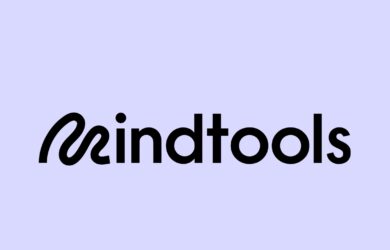When Pfizer produced an effective COVID-19 vaccine in record time, the relief was felt around the globe. But what was it like to work inside the company at that time – and communicating its work to an inquisitive world?
In her book, “Breaking Through,” Pfizer Executive Vice-President and Chief Corporate Affairs Officer Sally Susman shares her experiences as the public face of the pharmaceutical giant during the pandemic.
In our latest Expert Interview, she told me how that felt and what she learned from it.
Here’s an excerpt. (You can stream the audio clip below or read a transcript here.)
But “Breaking Through” isn’t just about Pfizer’s vaccine innovations. Subtitled “Communicating to Open Minds, Move Hearts, and Change the World,” Susman’s book sets out 10 principles that lead to “breakthrough communication.”
They’re based on what she has observed during her own stellar career, which spans jobs on Capitol Hill and senior communications roles at Estée Lauder Companies and American Express.
Susman says, “The key point is that the best leaders, the ones who make the most change, know that communications is not a soft skill but a rock-hard competency and they respect it as such. It’s as important to them as finance, sales, quality, manufacturing, etc.”
Each of her 10 principles has its own chapter, which “starts usually with something that went wrong,” Susman explains. This opens into a discussion of why the principle is important to effective leadership communication, with real-life examples of situations and people who demonstrate it well.
Inspired By the Movie, “The Intern”
For instance, in the chapter titled, “Am I Boring You? Stay Curious, Be Creative,” we learn what happened when Susman hired a senior intern one summer.
“This is an idea I borrowed from the movie ‘The Intern’,” she recalls. “An elderly gentleman who has recently retired is bored with his retirement and feeling somewhat on the margins, so he signs up to be an intern at a small company run by the actress Anne Hathaway – she plays the role of the boss.”
“I watched this movie while flying to New York on a business trip and, halfway through the movie, tears were rolling down my face because who wouldn’t love to have this kind of a person in the office?”
Inspired, Susman approached Paul Critchlow, recently retired former head of communications at Merrill Lynch, and he readily agreed to be one of her summer interns. He insisted on the same pay as the other, much younger interns, and sat with them in the open-plan office.
This arrangement worked well for everyone involved. The other interns benefited from Critchlow’s vast experience, Susman had a valuable “sounding board” on hand, and for Critchlow himself, it beat the often slow pace of retired life.
She said, “To my amazement this became a viral thing and we were on the cover of Fast Company magazine, we were invited to speak at the South by Southwest conference. It was a wonderful example of letting your creativity and your curiosity about things lead you. It led to great outcomes for Paul, for me, for Pfizer.”
Leaders Taking the Stage
I’ve never encountered a senior intern, but I have seen the benefits of other leadership tips laid out in “Breaking Through.”
In fact, I was involved in one project that modeled several of them at once: an internal leadership event at a large multinational company. I’d been hired to produce content that captured the event, to be disseminated to all employees.
In select countries where the company operated, senior leaders were asked to deliver a personal TED-style talk, without a script, to a live audience of their colleagues.
As an external observer, I was fascinated to see how the two U.K. leaders approached this challenge. One chose to speak about their childhood. The other picked a difficult ethical dilemma from their days as a rookie executive. Neither of them found it easy. They’d rehearsed tirelessly, honing their private stories with the help of a specialist coach, and tried hard to get comfortable with their vulnerability.
When the day of the event arrived, the stakes felt high. Respect and reputations were at risk. The ornate hired hall was packed with expectant colleagues, who listened intently as their bosses stood alone in the spotlight, sharing their mistakes and learning from previously hidden aspects of their lives.
Each 15-minute talk was followed by a Q&A with the audience. It was remarkable to see how the sincerity and authenticity of these “TED Talks” encouraged others to open up, express empathy, and make new connections.
Principles for Breaking Through By Communicating
By my calculations, these brave leaders were demonstrating at least six of Susman’s 10 principles for “breaking through.”
They channeled their intention – the first principle in the book – spending time and effort on figuring out exactly what they wanted to say to that audience, and why.
They mustered the courage for candor – the second principle – pushing through discomfort to share true stories that could help other people in the telling.
They took time to pause and prepare, to perfect their pitch (“the tone and the quality that we bring to our human interaction,” as Susman puts it), and they did it with splashes of humor – three more principles from the book.
Perhaps above all, they reflected on and honored their own past experiences, which is principle number nine.
“I think there’s a lot to learn about the future by looking in the rearview mirror and remembering what you learned, how you did it, why it mattered, and what it meant to you,” Susman says.
When I reflect on that event now, several years later, I can see the value it brought, stretching the skills of these leaders, and building trust up and down the global organization.
Not all companies have the budget for such experimental events, or can spare senior executives to be so involved. But Susman’s 10 principles can be practiced at all levels, in all types of workplaces. The only requirement is the desire to break through.
Listen to the Full Story
You can listen to or read my full 30-minute interview with Sally Susman if you’re a Mind Tools member or if your employer is a Mind Tools for Business licensee.
If you’re not already a member, join Mind Tools now to gain unlimited access to 2,400+ resources, including our back catalog of 200+ Expert Interviews. Or you can find out more about Mind Tools for whole organizations, big or small, by contacting our enterprise team.
Meanwhile, catch more excerpts and insights from my guests by searching our Expert Interview blog topic and by signing up free to the Mind Tools Expert Voices podcast.



